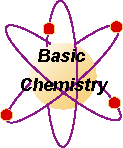Methanol Cannon
Purpose:
A corked, 1 liter plastic bottle is clamped into position on a ring stand or buried in the ground with the cork up. An electric spark is applied with a Tesla coil or igniter from a gas grill causing a loud explosion to occur and propelling the cork from the mouth of the bottle. Wear goggles and use only a small amount of alcohol.
Materials:
A corked, 1 liter plastic bottle is clamped into position on a ring stand or buried in the ground with the cork up. An electric spark is applied with a Tesla coil or igniter from a gas grill causing a loud explosion to occur and propelling the cork from the mouth of the bottle. Wear goggles and use only a small amount of alcohol.
Materials:
methanol (methyl alcohol) or ethanol (ethyl alcohol)
- Cork and 1 liter plastic bottle (shampoo or juice work best). You can reinforce the bottle with tape.
- igniter for a gas grill or Tesla coil
- two long nails (#8 up to #16)
- ring stand with a ring and testube holder or hole in the ground
- Cork and 1 liter plastic bottle (shampoo or juice work best). You can reinforce the bottle with tape.
Procedure: Prepare the cannon by inserting the two nails into the sides of the heavy plastic bottle the points of which are 1/4 inch apart.
Another alternative is to use an empty Pringles can with the top on and poke a small hole about one inch from the bottom. Use an eyedropper to squirt some acetone or alcohol through the hole forcefully. Allow several minutes for the alcohol vapor to disperse. Get behind a lexon shield and bring a burning match to the hole. The explosion will send the top to the ceiling. If you do not wait long enough then the vapor will not mix properly with the air and no explosion will occur. Proper ratios are important.
Discussion:
The alcohol reacts quickly with the oxygen in the air when ignited by a spark. An exothermic reaction occurs that produces carbon dioxide and water. If this is done in a dark environment a blue flame will be seen.
2 CH3OH(l) + 3 O2 --> 2 CO2 (g) + 4 H2O(l)
An interesting alternative is to use 3 gram of calcium carbide in 2 cm of water to produce acetylene gas. A hole is needed in the side of the bottle where the burning match can be held. After a few seconds try igniting the mixture. If the gas just burns at the hole and no explosion occurs then too much gas was produced. Reduce the amount of carbide. The reactions are:
CaC2 (s) + 2 H2O(l) ---> C2H2 (g) + Ca(OH)2 (aq)
Combustion of acetylene is:
2 C2H2 (g) + 5 O2 (g)---> 4 CO2 (g) + 2 H2O(g)
Another similar experiment follows:



